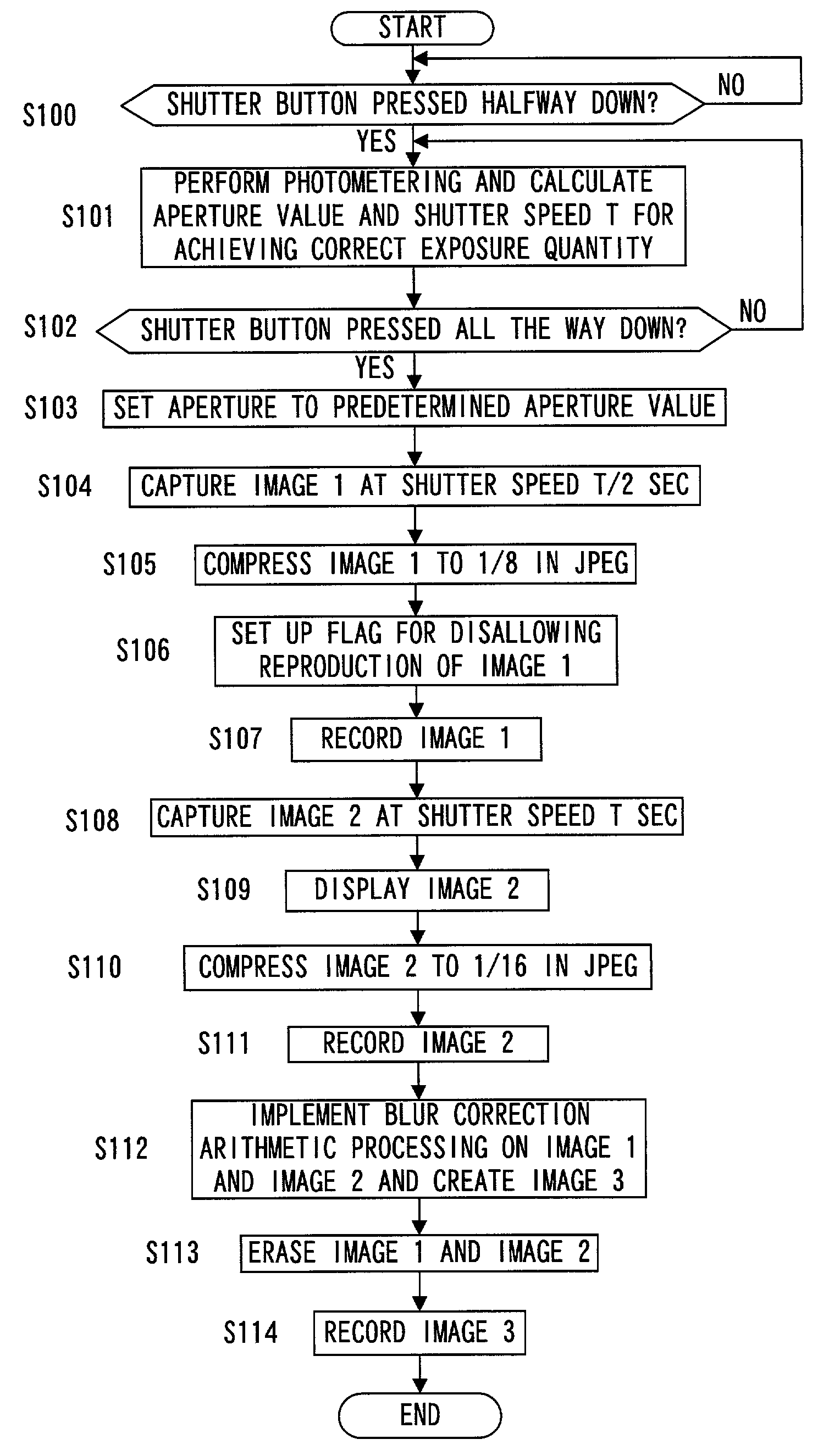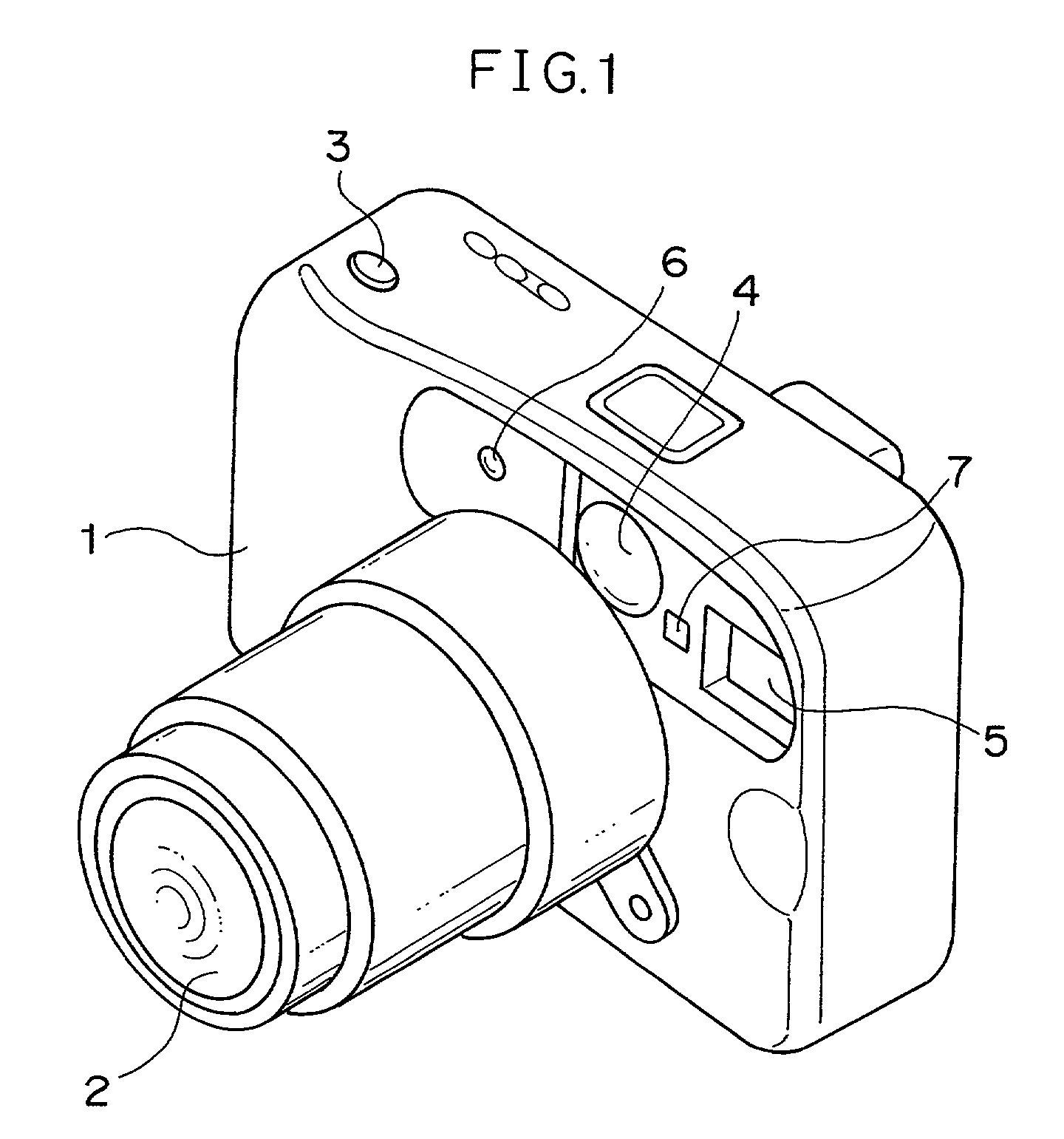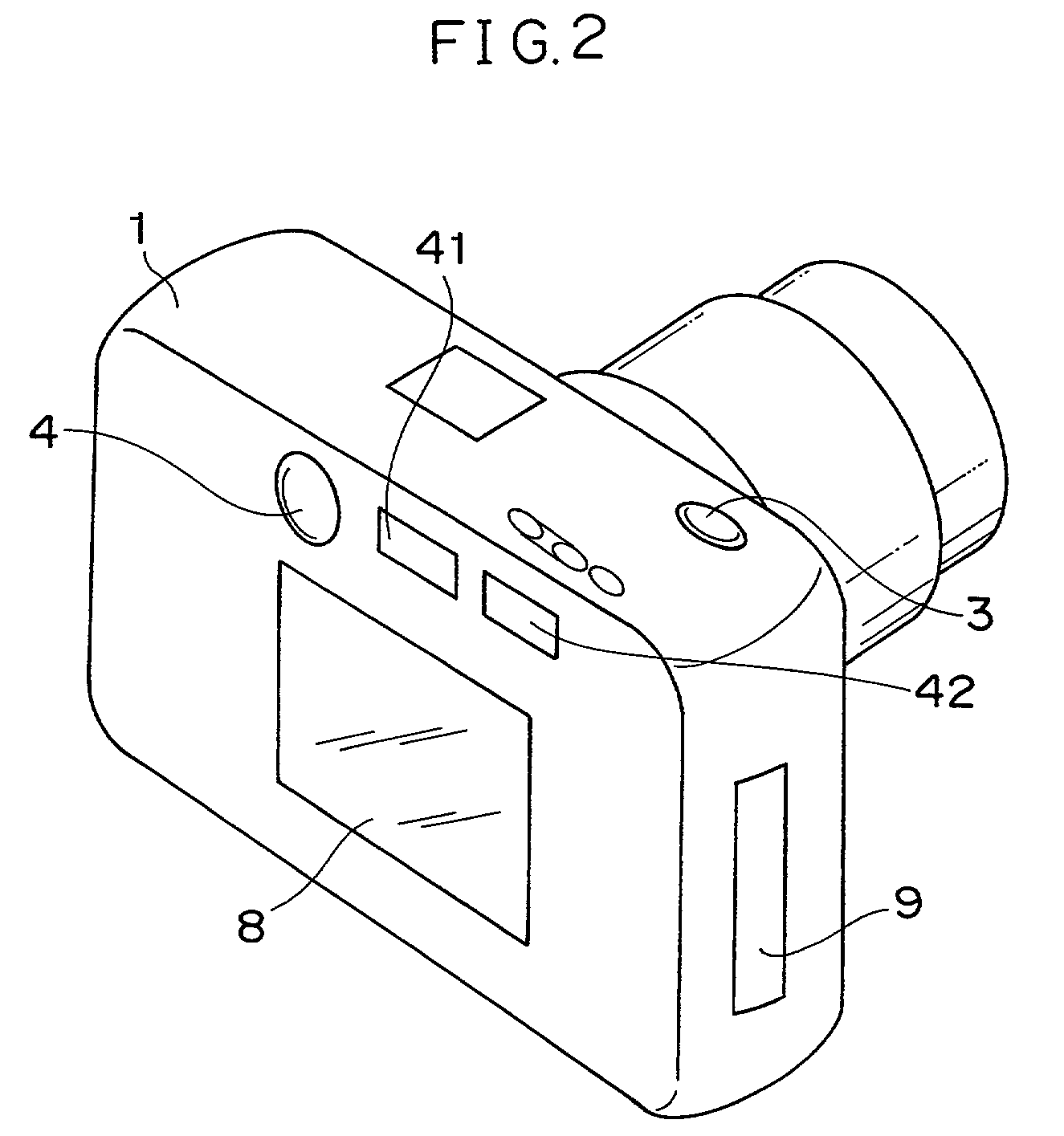Digital camera and digital processing system for correcting motion blur using spatial frequency
- Summary
- Abstract
- Description
- Claims
- Application Information
AI Technical Summary
Benefits of technology
Problems solved by technology
Method used
Image
Examples
first embodiment -
-First Embodiment-
[0036]The digital camera achieved in the first embodiment of the present invention is explained in reference to the drawings.
[0037]FIGS. 1 and 2 present perspectives of the external appearance of a digital camera 1 in the first embodiment of the present invention.
[0038]FIG. 1 is a perspective of the digital camera 1 viewed from the front. At the front surface of the digital camera 1, a photographic lens 2 that forms a subject image, a view finder 4 used when checking the subject photographing range, a light emitting unit (strobe) 5 that emits flash light to illuminate the subject during a photographing operation, a colorimetering element 6 that measures the color of the subject, a photometering element 7 that measures the brightness of the subject and the like are provided. At the top surface of the digital camera 1, a shutter release button 3 which is operated by the photographer when photographing the subject is provided.
[0039]FIG. 2 is a perspective of the digit...
second embodiment -
-Second Embodiment-
[0104]The basic structure of the digital camera achieved in the second embodiment is identical to the structure assumed in the first embodiment shown in FIGS. 1 and 2. In the second embodiment, blurred image correction processing is implemented by dividing an image into pixel data blocks corresponding to 16×16 pixels. The following is an explanation of the blurred image correction processing achieved in the second embodiment, given in reference to the flowchart presented in FIGS. 9 and 10. It is to be noted that the processing achieved in the second embodiment corresponds to that implemented in step S112 in the flowchart presented in FIG. 4 in reference to which the first embodiment has been explained earlier. The explanation below focuses on the difference from the first embodiment.
[0105]In step S300, the coordinate parameters x and y used to indicate the positions of the individual pixels of image 1 and the individual pixels of image 2 are initialized to 1.
[0106...
third embodiment -
-Third Embodiment-
[0119]An explanation has been given in reference to the first and second embodiments above by assuming that the image blur correction is implemented without emitting light at the strobe unit 5 when performing photographing operation. An explanation is now given in reference to the third embodiment on image blur correction control implemented during a flash photographing operation. FIG. 11 presents a flowchart of the procedure of image blur correction control processing implemented when light is emitted at the strobe unit 5. It is to be noted that the explanation given in reference to the third embodiment focuses on the difference from the first and second embodiments.
[0120]Since the processing performed in steps S400˜S403 is identical to the processing in steps S100˜S103 in FIG. 4, its explanation is omitted.
[0121]In step S404, the quantity Q of light to be emitted at the strobe unit 5 is calculated in correspondence to the photographing distance, the aperture valu...
PUM
 Login to View More
Login to View More Abstract
Description
Claims
Application Information
 Login to View More
Login to View More - R&D
- Intellectual Property
- Life Sciences
- Materials
- Tech Scout
- Unparalleled Data Quality
- Higher Quality Content
- 60% Fewer Hallucinations
Browse by: Latest US Patents, China's latest patents, Technical Efficacy Thesaurus, Application Domain, Technology Topic, Popular Technical Reports.
© 2025 PatSnap. All rights reserved.Legal|Privacy policy|Modern Slavery Act Transparency Statement|Sitemap|About US| Contact US: help@patsnap.com



